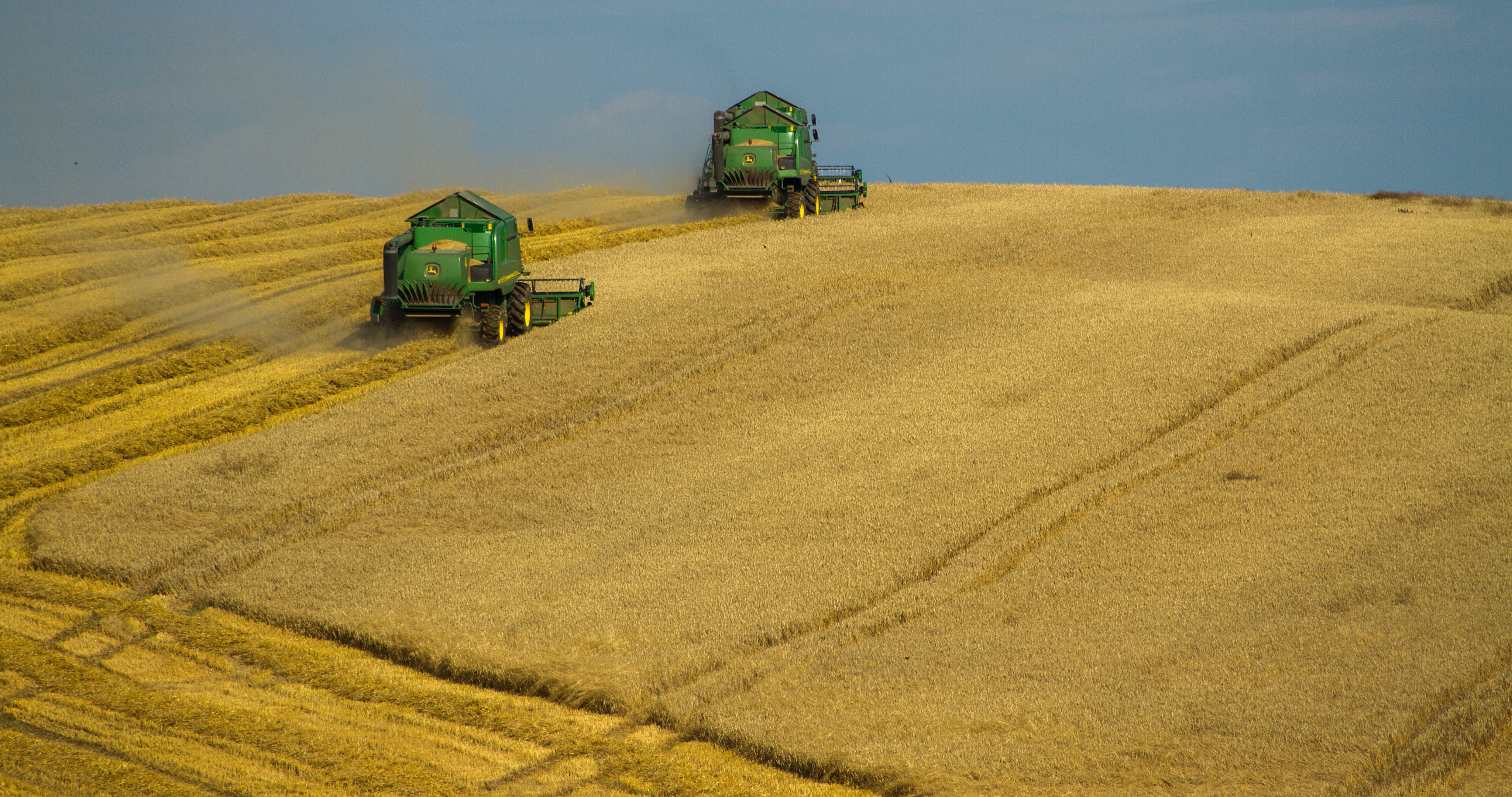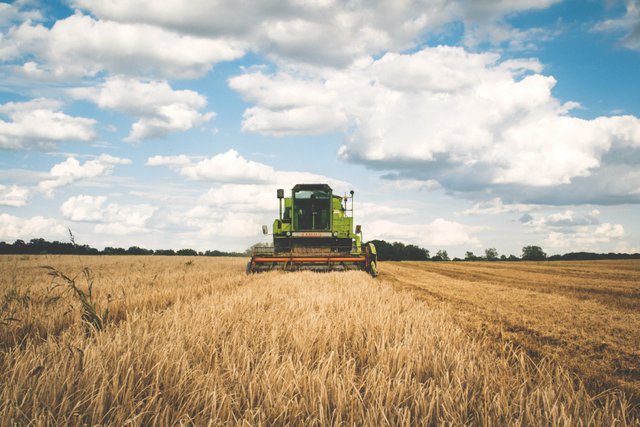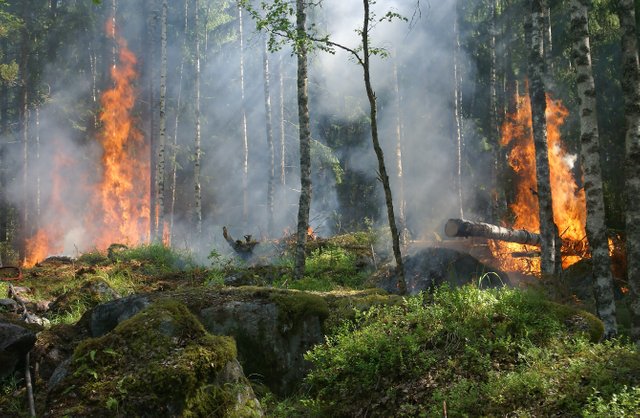As you probably know, green house gas emissions lead to climate change, and human activities make up a great part of those emissions. But did you know that the agricultural sector as a whole is responsible for 14% of the total green house gas emissions? In the following article, I'll explain how cultivation contributes to these emissions.

There are several aspects of plant cultivation that induce the emission of GHG. First there’s the energy used for the farm machinery and the agricultural inputs and the manufacturing after harvesting. Then there’s the management of the agricultural land. At last the impact of the conversion from different land uses to agricultural land needs to be taken into account.
The first category includes all fossil fuels and electricity used for farming, the production of fertilizers and pesticides and the transportation to the farms, and all the energy needed for the machinery and infrastructure (including water pumps for irrigation) of the farm.

In the category of land management, manure management and rise cultivation are the biggest contributors. These practices are a potential source of CO2, N2O and CH4. N2O-emissions make up approximately half of the emissions released by agriculture. These emissions are the result of nitrification- (the conversion of ammonium into nitrate) and denitrification- (the conversion of nitrate into nitrogen gas) processes, executed by microorganisms living in the soil. Thus, this are the consequences of natural processes, which makes it difficult to develop mitigation strategies. However, a great part of the N input originates from fertilizers. The best way to control these processes is thus by increasing nitrogen use efficiency, which could result in a reduction of N2O-emission of 70-90%.

Rice cultivation is the biggest source of CH4-emissions, as it results in anaerobic digestion (the conversion of glucose into carbon dioxide and methane) by microorganisms. Rice cultivation is often practiced in developing countries, that are confronted with a growing population and thus a growing demand for food. This resulted in an enormous rise in methane-emissions by rice cultivation, with annual growth rates of 0,4%/year between 1961 and 2010. The resulting amount of emissions can be either positive or negative, depending on the composition of the soil. This can contain methane-oxidizing bacteria, called methanotrophs. Another possibility is that part of the produced methane is oxidized in aerobic layers in the paddy soils.

To expand agriculture production, land is often converted. These transformations result in change in carbon stocks. The conversion of grasslands, peatlands are forests into arable land have all led to more carbon in the atmosphere, as these land usages all contain more carbon than farmland does. In the case of deforestation, the release of the CO2 bound in the trees enlarges the problem. Considering the continuous population growth, this will remain an issue in the future.
Despite the growing population, GHG emissions by agriculture, forestry and other land use stagnated since 2000, while they increased in other sectors. It’s also important to mention that, while fertilizers do generate GHG emissions, the higher yields they generate have prevented up to 161 gigatons of carbon since 1961. Creating a higher yield should thus be seen as a mitigation strategy to control GHG emissions and at the same time provide enough nutrition for the growing population.
REFERENCES
All images in this article were licensed for reuse.
Burney, J. A., Davis, S. J., & Lobell, D. B. (2010). Greenhouse gas mitigation by agricultural intensification. PNAS, 107(26). https://doi.org/10.1073/pnas.0914216107
EFCTC. (2014). Global Temperature change Potential compared to Global Warming Potential.
FAOSTAT (2013) FAOSTAT database. Food and Agriculture Organization of the United Nations. Available at: http://faostat.fao.org/
IPCC (2014) Climate Change 2014: Synthesis Report. Contribution of Working Groups I, II and III to the Fifth Assessment Report of the Intergovernmental Panel on Climate Change [Core Writing Team, R.K. Pachauri and L.A. Meyer (eds.)]. IPCC, Geneva, Switzerland, 151 pp.
Kongshaug G (1998) Energy consumption and GHG emissions in fertilizer production. IFA technical conference, Marrakech, p 18
Lenka, S., Lenka, N. K., Sejian, V., & Mohanty, M. (2015). Contribution of Agriculture Sector to Climate Change. In Climate Change Impact on Livestock: Adaptation and Mitigation (pp. 37–50). New Delhi, India: Springer. https://doi.org/10.1007/978-81-322-2265-1




You received a 10.0% upvote since you are not yet a member of geopolis and wrote in the category of "geography".
To read more about us and what we do, click here.
https://steemit.com/geopolis/@geopolis/geopolis-the-community-for-global-sciences-update-4
Downvoting a post can decrease pending rewards and make it less visible. Common reasons:
Submit
SI eso que dices es cierto y ademas ve el vídeo www expediente carne realizado en Alemania y terminaras como yo de ver el daño que le estamos haciendo a nuestra nave azul como cariñosa mente le llamamos a la tierra
Downvoting a post can decrease pending rewards and make it less visible. Common reasons:
Submit
@originalworks
Downvoting a post can decrease pending rewards and make it less visible. Common reasons:
Submit
Great post! The monoculture strategy of modern agriculture is against Nature, and the Permaculture approach is much more healthy alternative.
Downvoting a post can decrease pending rewards and make it less visible. Common reasons:
Submit
Congratulations @sci.anse! You received a personal award!
Click here to view your Board
Downvoting a post can decrease pending rewards and make it less visible. Common reasons:
Submit
Congratulations @sci.anse! You received a personal award!
You can view your badges on your Steem Board and compare to others on the Steem Ranking
Vote for @Steemitboard as a witness to get one more award and increased upvotes!
Downvoting a post can decrease pending rewards and make it less visible. Common reasons:
Submit